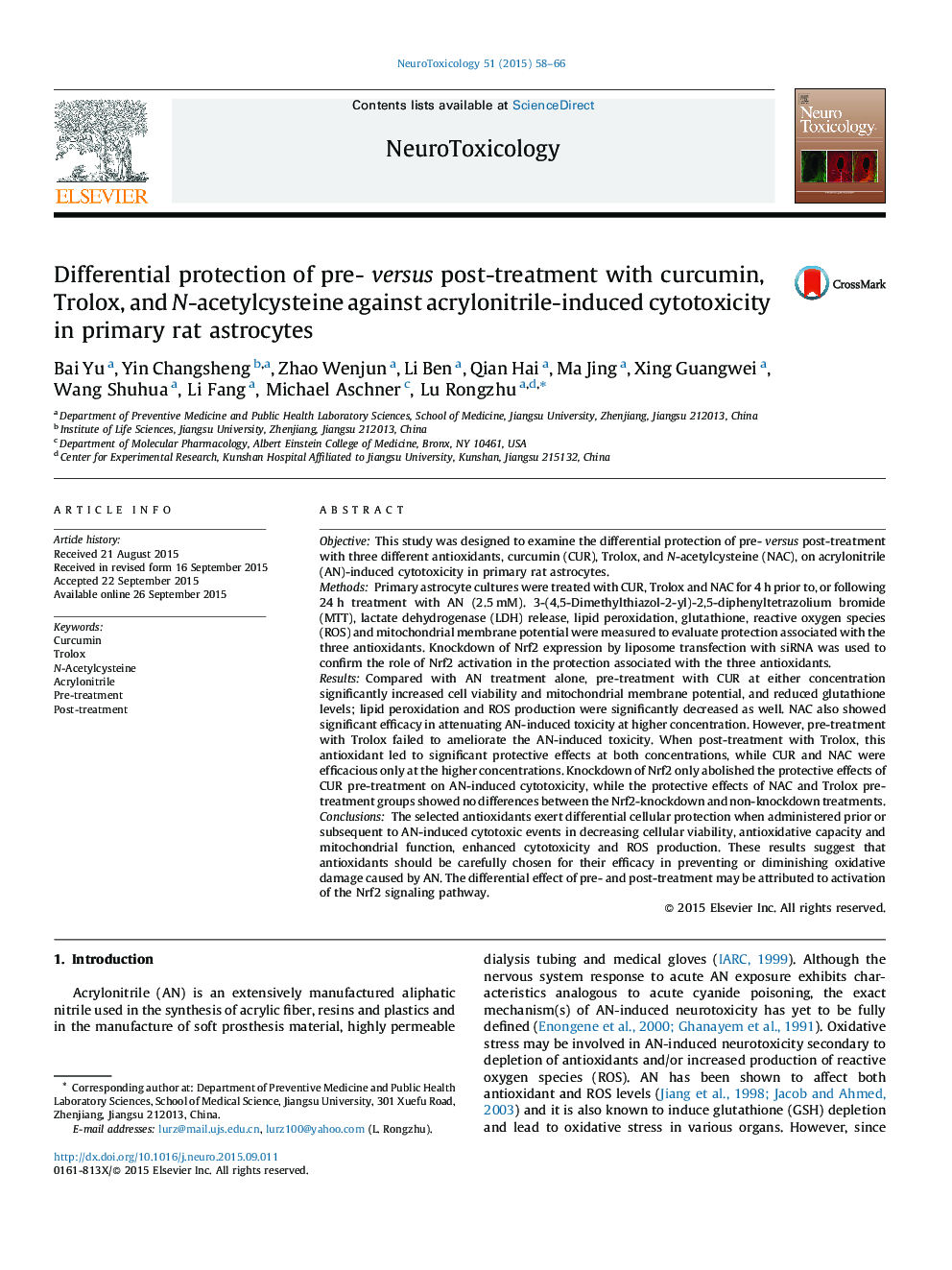| کد مقاله | کد نشریه | سال انتشار | مقاله انگلیسی | نسخه تمام متن |
|---|---|---|---|---|
| 2589466 | 1562043 | 2015 | 9 صفحه PDF | دانلود رایگان |

• Curcumin pretreatment is most efficacious in preventing acrylonitrile-induced oxidative stress.
• Trolox post-treatment is more efficacious in attenuating acrylonitrile-induced oxidative stress.
• N-acetylcysteine is efficacious for both pre- and post-treatment.
• Difference between pre- or post-treatments was attributed to activation of Nrf2.
• Antioxidants should be carefully chosen for attenuating oxidative stress.
ObjectiveThis study was designed to examine the differential protection of pre- versus post-treatment with three different antioxidants, curcumin (CUR), Trolox, and N-acetylcysteine (NAC), on acrylonitrile (AN)-induced cytotoxicity in primary rat astrocytes.MethodsPrimary astrocyte cultures were treated with CUR, Trolox and NAC for 4 h prior to, or following 24 h treatment with AN (2.5 mM). 3-(4,5-Dimethylthiazol-2-yl)-2,5-diphenyltetrazolium bromide (MTT), lactate dehydrogenase (LDH) release, lipid peroxidation, glutathione, reactive oxygen species (ROS) and mitochondrial membrane potential were measured to evaluate protection associated with the three antioxidants. Knockdown of Nrf2 expression by liposome transfection with siRNA was used to confirm the role of Nrf2 activation in the protection associated with the three antioxidants.ResultsCompared with AN treatment alone, pre-treatment with CUR at either concentration significantly increased cell viability and mitochondrial membrane potential, and reduced glutathione levels; lipid peroxidation and ROS production were significantly decreased as well. NAC also showed significant efficacy in attenuating AN-induced toxicity at higher concentration. However, pre-treatment with Trolox failed to ameliorate the AN-induced toxicity. When post-treatment with Trolox, this antioxidant led to significant protective effects at both concentrations, while CUR and NAC were efficacious only at the higher concentrations. Knockdown of Nrf2 only abolished the protective effects of CUR pre-treatment on AN-induced cytotoxicity, while the protective effects of NAC and Trolox pre-treatment groups showed no differences between the Nrf2-knockdown and non-knockdown treatments.ConclusionsThe selected antioxidants exert differential cellular protection when administered prior or subsequent to AN-induced cytotoxic events in decreasing cellular viability, antioxidative capacity and mitochondrial function, enhanced cytotoxicity and ROS production. These results suggest that antioxidants should be carefully chosen for their efficacy in preventing or diminishing oxidative damage caused by AN. The differential effect of pre- and post-treatment may be attributed to activation of the Nrf2 signaling pathway.
Journal: NeuroToxicology - Volume 51, December 2015, Pages 58–66